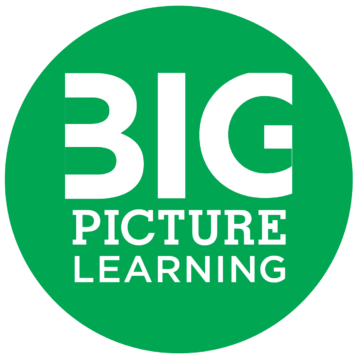The Walkabout Learning Model is inspired by sacred Australian Aboriginal rites of passage, which prepare young people for adulthood through real-world experiences. It is designed to engage young people in their own learning by creating a contemporary rite of passage where students discover the interconnectedness of knowledge through experiential learning opportunities.
The Walkabout Learning Model provides a framework for developing community-centered, experiential high schools that emphasize the co-development of interpersonal skills and rigorous academic standards. Over the course of a year, learning comes alive for students in five Challenge Areas: Wilderness Expeditions, Service Learning, Applied Academics, Career Internships, and Final Presentations. These learning experiences push students to move beyond their perceived limitations and support them in gaining a deeper sense of responsibility and ownership of their education. At the heart of the model is a Social Emotional Learning (SEL) component that supports students in developing as whole human beings and seeks to engage students with their own emotions, peers, and communities.
Walkabout Education and the Walkabout Learning Model is the vision of a team of educators and alumni from the Walkabout Program, a highly successful experiential education program that offered a full-day, full-year, public alternative for high school students for 37 years in New York.
Walkabout Education offers curricular materials, consultation, coaching, and professional learning opportunities to schools interested in implementing the model in whole or in part.
What Makes This Model Innovative?
Relevance
Connection & Community
Active Self-Direction
Goals
Walkabout Education partners with communities to create structurally anti-racist, experiential schools where, as the mission states, “the cultures and talents of students are reflected in a challenge-oriented curriculum that activates social justice and builds self-efficacy and real-world skills.”
Confidence to Pursue Goals
Students build the confidence to test themselves and their skills in immersive experiences outside their comfort zone.
Direction & Focus
Students self-reflect and embrace goal setting as a transformer of experience and activator of personal energy.
Positive Mindset
Students develop the mindset to reframe experiences and grow from them.
Academic, Practical and Professional Skills
Students build the skills to examine, grapple with, and integrate knowledge, information, practices, and ideas that will help them accomplish their goals.
Responsibility
Students develop agency to effect change for themselves and others.
Experience
Walkabout employs experiential learning, understood as learning that engages students in direct experience and focused reflection to build knowledge and skills and develop capacities for full participation in civic life.
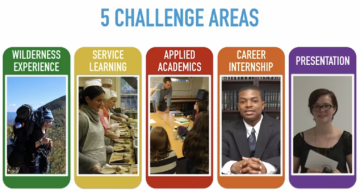 The program, which strives to eliminate the gap between what students learn in school and what they experience in life, is divided into five Challenge Areas: Wilderness, Service Learning, Applied Academics, Career Internship, and Presentations. Within and between each area, students engage in a recursive process of experience, reflection, and practice applied in real-life settings. Walkabout Introduction & Philosophy
The program, which strives to eliminate the gap between what students learn in school and what they experience in life, is divided into five Challenge Areas: Wilderness, Service Learning, Applied Academics, Career Internship, and Presentations. Within and between each area, students engage in a recursive process of experience, reflection, and practice applied in real-life settings. Walkabout Introduction & Philosophy
Students begin the year with Orientation, where they build community, learn about the Challenge Areas, and begin to participate in the Social Emotional Learning protocols that are designed to involve them in the creation of school-wide culture. What is established during Orientation is woven throughout the entire year, with the goal that all students feel safe, respected and heard through daily, monthly and yearly community rituals. During the Wilderness Challenge Area, students spend a full week off campus in the wilderness. During Service Learning and Internships, students participate in Applied Academics on Mondays, on campus, as well as asynchronous or self-directed learning throughout the week.
To establish school culture and to prepare for the Challenge Areas, each year starts with a week-long Orientation. This first week of school is designed to build community and lay the foundation for a successful year. During this time, students participate in team-building exercises, where they begin to break down barriers and adopt habits of mind that foster a sense of community. Students and staff also use this time to create individual and group goals that set a vision and shared responsibility for what happens during the year. During Orientation, students learn about the SEL Framework and begin to take part in each of the SEL protocols. At the close of the week, the foundation for student-led school governance will be laid and students will be prepared for their first Challenge Area: Wilderness. The principles, attitudes and behaviors established during Orientation are woven into the entire school year. Orientation – Staff Preparation Guide Orientation – Student Preparation Guide Orientation – Student Experience Guide
Social Emotional Learning (SEL) in Walkabout’s model is designed to support students in understanding their emotions, their peers, and their communities, setting the stage for meaningful engagement with their learning. Students engage in various SEL protocols to foster an environment where they feel safe, heard, and valued. Social Emotional Learning Overview
- Community-Wide Agreements: At the start of the school year, students and staff generate community-developed agreements that serve as the code of conduct. This set of agreements creates the framework of school governance. Introduced during Orientation and embedded throughout the year, the agreements support individual and community goals as well as provide clear boundaries that create a safe, inclusive atmosphere.
- Town Meeting: A weekly community-wide practice, which is used to maintain community cohesion and to make decisions by consensus about issues impacting the school. These meetings are run by revolving groups of students, and this practice gives students a forum to propose, discuss, and decide issues of importance to them and provides opportunities for students to exercise leadership, empathy, and shared decision-making.
- New and Goods: A practice embedded in whole school morning meetings each day, during which all members of the community go around the room and share something new and good going on in their lives. The practice gives all students an opportunity to speak publicly everyday, it strengthens community by helping members get to know each other, and it also helps students practice gratitude and learn how their perspective can impact the quality of their lives.
- Validations: Students create validation envelopes where community members can leave notes affirming something that they appreciate about a particular person. Time is also allotted during Town Meetings and after Wilderness Expeditions for individual and community-wide validations. This practice helps students feel seen and valued and allows for moments of gratitude for what others bring to the community.
- Advisory: All Walkabout students are assigned a School Advisor for the year who is the point of support for all academic, social-emotional, and behavioral purposes as well as postsecondary planning. Advisory groups of 15–17 students meet daily during Applied Academics and Advisors serve as the main point of contact between students and families.
- Circle Keeping: Circle keeping supports students in establishing community cohesion, learning restorative concepts and skills, and harnessing the power of restorative practices to make things right when trust has been broken.
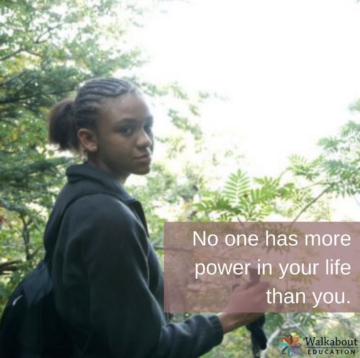 The first Challenge Area students take part in is Wilderness. During wilderness expeditions, students embark on week-long backpacking trips where community, self-confidence and leadership are cultivated. These trips necessitate cooperation and positive risk taking, engender self-confidence, and provide a cornerstone for all subsequent challenges and growth. In addition to connecting students with the natural world, the wilderness experience provides a context for building community by giving students the opportunity to challenge themselves individually and collectively. These expeditions bookend the year. Wilderness – Staff Preparation Guide Wilderness – Student Preparation Guide Wilderness – Student Experience Guide Wilderness to Service Learning – Transition Guide
The first Challenge Area students take part in is Wilderness. During wilderness expeditions, students embark on week-long backpacking trips where community, self-confidence and leadership are cultivated. These trips necessitate cooperation and positive risk taking, engender self-confidence, and provide a cornerstone for all subsequent challenges and growth. In addition to connecting students with the natural world, the wilderness experience provides a context for building community by giving students the opportunity to challenge themselves individually and collectively. These expeditions bookend the year. Wilderness – Staff Preparation Guide Wilderness – Student Preparation Guide Wilderness – Student Experience Guide Wilderness to Service Learning – Transition Guide
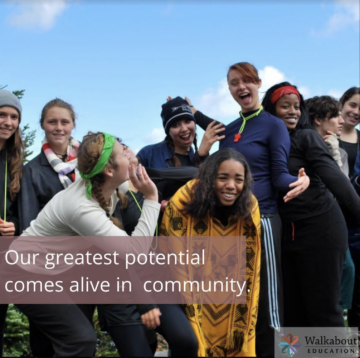 The Service Learning Challenge Area gives students the opportunity to connect with and contribute to their communities in meaningful ways as they begin to explore and demonstrate the rights and responsibilities of a proactive, informed citizen. During Service Learning, each student spends one day a week on campus for academics and the remainder of the week at a self-selected service learning placement in their community. As students interact with adults in a professional atmosphere, they become stakeholders in their communities and experience the power of the individual to make a difference. Students see how subject matter has authentic applications to the real world as they apply skills and knowledge from the classroom to issues facing their communities. Students are supported by their teachers during this time with weekly on-site visits to their service learning placements. Service Learning – Staff Preparation Guide Service Learning – Student Preparation Guide Service Learning – Student Experience Guide Service Learning to Applied Academics – Transition Guide
The Service Learning Challenge Area gives students the opportunity to connect with and contribute to their communities in meaningful ways as they begin to explore and demonstrate the rights and responsibilities of a proactive, informed citizen. During Service Learning, each student spends one day a week on campus for academics and the remainder of the week at a self-selected service learning placement in their community. As students interact with adults in a professional atmosphere, they become stakeholders in their communities and experience the power of the individual to make a difference. Students see how subject matter has authentic applications to the real world as they apply skills and knowledge from the classroom to issues facing their communities. Students are supported by their teachers during this time with weekly on-site visits to their service learning placements. Service Learning – Staff Preparation Guide Service Learning – Student Preparation Guide Service Learning – Student Experience Guide Service Learning to Applied Academics – Transition Guide
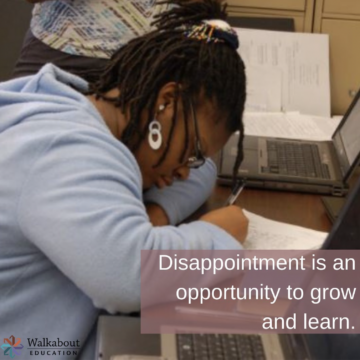 Applied Academics reconciles the gap between what students learn in school and what they experience in day-to-day life. By applying the concepts that they learn in school to real-world situations, students are motivated to pursue knowledge. A transdisciplinary approach to applied academics utilizes the entire learning landscape to create critical, invested, transformative thinkers. It integrates subject knowledge from various fields and utilizes resource cultivation both inside and outside the school by engaging with community organizations to solve problems and directly impact the neighborhoods in which students live. Applied Academics provides students with the opportunity to master core competencies while they develop the metacognitive skills necessary to be successful in life. During the two Applied Academics Challenge Areas, students are engaged in academics five days a week and, during the other challenge areas, students are on campus for Applied Academics one day a week.
Applied Academics reconciles the gap between what students learn in school and what they experience in day-to-day life. By applying the concepts that they learn in school to real-world situations, students are motivated to pursue knowledge. A transdisciplinary approach to applied academics utilizes the entire learning landscape to create critical, invested, transformative thinkers. It integrates subject knowledge from various fields and utilizes resource cultivation both inside and outside the school by engaging with community organizations to solve problems and directly impact the neighborhoods in which students live. Applied Academics provides students with the opportunity to master core competencies while they develop the metacognitive skills necessary to be successful in life. During the two Applied Academics Challenge Areas, students are engaged in academics five days a week and, during the other challenge areas, students are on campus for Applied Academics one day a week.
Applied Academics resources will be available soon and can be accessed at the following links Applied Academics – Staff Preparation Guide Applied Academics – Student Preparation Guide Applied Academics – Student Experience Guide Applied Academics to Internship – Transition Guide
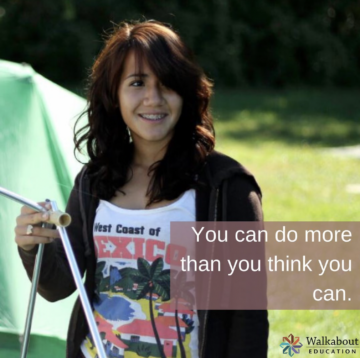 The Internship Challenge Area gives students an opportunity to apply their academic skills in the real world. Students are paired with professionals in their fields of interest, affording them mentorship, apprenticeship, real-world job training, transferable skills, and a network of community leaders who share a stake in their success. Career Internship is the manifestation of competencies learned in Applied Academics integrated into a professional environment. Students are on campus one day a week and at their internship sites four days a week, where they receive weekly on-site visits from their Advisor. Internship – Staff Preparation Guide Internship – Student Preparation Guide Internship – Student Experience Guide Internship to Applied Academics – Transition Guide
The Internship Challenge Area gives students an opportunity to apply their academic skills in the real world. Students are paired with professionals in their fields of interest, affording them mentorship, apprenticeship, real-world job training, transferable skills, and a network of community leaders who share a stake in their success. Career Internship is the manifestation of competencies learned in Applied Academics integrated into a professional environment. Students are on campus one day a week and at their internship sites four days a week, where they receive weekly on-site visits from their Advisor. Internship – Staff Preparation Guide Internship – Student Preparation Guide Internship – Student Experience Guide Internship to Applied Academics – Transition Guide
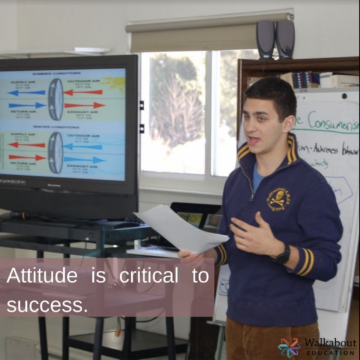 During Presentations, students give authentic demonstrations of their learning in exhibitions of their work before their peers, mentors, community stakeholders, parents and friends. At the completion of each year, these exhibitions, along with the assemblage of a portfolio spanning their high school career, prepare students for culminating presentations that exemplify the intellectual, practical, and attitudinal skills they have acquired. This rite of passage provides evidence of the student’s transition from childhood to adulthood and their readiness to embark on the next phase of their lives. Presentation – Staff Preparation Guide Presentation – Student Preparation Guide Presentations – Student Experience Guide
During Presentations, students give authentic demonstrations of their learning in exhibitions of their work before their peers, mentors, community stakeholders, parents and friends. At the completion of each year, these exhibitions, along with the assemblage of a portfolio spanning their high school career, prepare students for culminating presentations that exemplify the intellectual, practical, and attitudinal skills they have acquired. This rite of passage provides evidence of the student’s transition from childhood to adulthood and their readiness to embark on the next phase of their lives. Presentation – Staff Preparation Guide Presentation – Student Preparation Guide Presentations – Student Experience Guide
Supporting Structures
Fully adopting all components of the Walkabout Learning Model requires significant shifts in school structures including curriculum, adult roles, scheduling, and partnerships. With thoughtful planning, portions of the model may also be implemented in existing schools.
Curriculum must be co-designed by students and staff, so that it is recontextualized for the community and gives students voice and choice.
Fundamental to Walkabout’s anti-racist mission is curriculum and instruction that is culturally relevant and contextualized for the community which it supports. Walkabout Education supports schools in designing a curriculum that aligns with the model while meeting all state standards. The most critical element is enabling students and staff to co-design culturally relevant units of study and instructional plans that give students agency in their learning.
While instruction varies by unit, in each Challenge Area, students and staff engage in four stages of learning:
- Staff preparation: Staff gather resources and materials, set goals and collaborate before launching the student preparation phase.
- Student preparation: Students are introduced to the unique skills and knowledge necessary to find success during each Challenge Area.
- Experience: Now fully prepared, students dive into their Challenge Area.
- Transition: Each Challenge Area culminates with a Transition into the next. During Transitions, students reflect on their experience and demonstrate their learning before considering the purpose of the next Challenge Area and identifying goals related to what they want to accomplish within it.
Students are primarily assessed by the completion of a performance-based portfolio that showcases their learning and development throughout the year. Each student is supported by a Portfolio Advisor, who guides them through the process of portfolio creation. Walkabout Portfolio Materials
All members of the school community should share responsibility and decision making.
Essential to Walkabout’s anti-racist design is the creation of schools that allow for all members of the community to contribute to how the school operates. This model decentralizes leadership and decision making, giving each member of the community a voice. As such, the best school leaders for this model will create the conditions that allow for many voices to be a part of the students’ learning team. Central to the creation of a strong school culture is student autonomy, agency, and voice. At the start of each school year, students decide on the type of school governance they will use, and they co-create agreements with staff that establish shared guidelines for the year. Additionally, restorative justice practices such as Community Circles, Restorative Circles, and Peer Mediation are embedded in the model as structures that support student self-governance and school culture.
Walkabout’s five key assumptions serve as the guiding principles behind the Walkabout experience and philosophy. The Five Key Assumptions These Key Assumptions are the foundation through which students develop and exercise agency.
In the Walkabout Learning Model, adults must take on the role of mentor and co-creator of learning experiences.
In the Walkabout model, all staff serve as advisors and mentors to students. Teachers and administrators must be willing to take on roles in each of the Challenge Areas throughout the year. This includes co-designing academic units of study with students, visiting students at their service learning and internship placements weekly, coordinating with placement directors, and providing support to ensure that students meet all yearly requirements.
The staff experience also reflects the student experience in the model. Staff must go through the same phases as students—preparation, experience, and transition—and abide by the same policies as students.
Scheduling that supports the immersive nature of each Challenge Area is required.
This model does not follow a traditional high school calendar and therefore requires scheduling that supports each student’s experiential learning path. Each of the five Challenge Areas requires a different structure of support and use of time as students spend a significant portion of the year off campus. Wilderness occurs twice a year and is a full week off campus. During Service Learning and Internship, students are off campus four days a week and on site for academics one day a week. All of this requires coordination with teachers, families, and community partners. Walkabout Sample Schedules – 9th Grade
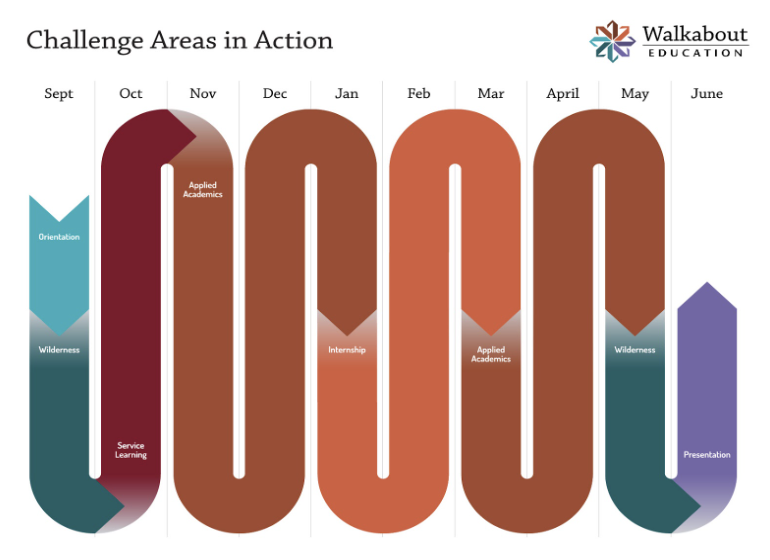
A robust network of partnerships, including with the local First Nation, is critical to successfully implementing the model.
When implementing the Walkabout model, family and community engagement is critical to ensure that the school is designed with, not for, the community. Schools must build and sustain strong relationships with families and community partners by actively listening and having a clear and equitable communications strategy.
As Walkabout was inspired by Australian Aboriginal practices, it is critical that schools adopting this model build lasting connections with the First Nations where the school is located and ask permission when incorporating Indigenous concepts.
In addition, partnerships with multiple community-based organizations and local businesses will be vital to the success of Wilderness, Service Learning, and Internships. A school adopting the Walkabout model can do this in various ways including hiring a partnership coordinator or leveraging existing staff to take on the role for different Challenge Areas. Regardless of the approach, it is important for all staff to participate in the operationalizing of experiential components to build a holistic experiential culture. Walkabout Education provides workshops and coaching for partnership building and maintenance.
Designing a space that allows for collaboration and student ownership is central to the Walkabout philosophy.
When designing a space that supports this model, it is critical that students feel welcome and have ownership over the space. It is best to have large, malleable spaces and furniture, as class collaboration, community circles, and whole community gatherings are central to instruction and school culture. Students should also feel comfortable in any of the spaces that the school occupies. Creating a student-owned space can include the addition of spaces like a student lounge and co-created instructional spaces with staff. It is also beneficial to have outdoor space, but it is not required for the model’s success.
Additional funding for Challenge Areas may be necessary.
When budgeting for this model, schools might need to consider additional funding for some of the Challenge Areas. This includes covering costs for wilderness equipment, internship stipends, and travel.
Schools must engage in improvement cycles to collect student and staff feedback to inform programming.
A central component of the continuous improvement cycle at Walkabout is briefing and debriefing. Each Challenge Area concludes with a reflective debriefing process called “Things to Improve”, where staff and students identify things that could have been done better. These reflections are recorded and reviewed during the staff preparation phase for each Challenge Area. Walkabout also employs the 360-degree model of assessment to provide comprehensive feedback for evaluation which provides leaders, students, teachers, parents, and partners with the opportunity to comment on the effectiveness of school staff.
Curriculum must be co-designed by students and staff, so that it is recontextualized for the community and gives students voice and choice.
Fundamental to Walkabout’s anti-racist mission is curriculum and instruction that is culturally relevant and contextualized for the community which it supports. Walkabout Education supports schools in designing a curriculum that aligns with the model while meeting all state standards. The most critical element is enabling students and staff to co-design culturally relevant units of study and instructional plans that give students agency in their learning.
While instruction varies by unit, in each Challenge Area, students and staff engage in four stages of learning:
- Staff preparation: Staff gather resources and materials, set goals and collaborate before launching the student preparation phase.
- Student preparation: Students are introduced to the unique skills and knowledge necessary to find success during each Challenge Area.
- Experience: Now fully prepared, students dive into their Challenge Area.
- Transition: Each Challenge Area culminates with a Transition into the next. During Transitions, students reflect on their experience and demonstrate their learning before considering the purpose of the next Challenge Area and identifying goals related to what they want to accomplish within it.
Students are primarily assessed by the completion of a performance-based portfolio that showcases their learning and development throughout the year. Each student is supported by a Portfolio Advisor, who guides them through the process of portfolio creation. Walkabout Portfolio Materials
All members of the school community should share responsibility and decision making.
Essential to Walkabout’s anti-racist design is the creation of schools that allow for all members of the community to contribute to how the school operates. This model decentralizes leadership and decision making, giving each member of the community a voice. As such, the best school leaders for this model will create the conditions that allow for many voices to be a part of the students’ learning team. Central to the creation of a strong school culture is student autonomy, agency, and voice. At the start of each school year, students decide on the type of school governance they will use, and they co-create agreements with staff that establish shared guidelines for the year. Additionally, restorative justice practices such as Community Circles, Restorative Circles, and Peer Mediation are embedded in the model as structures that support student self-governance and school culture.
Walkabout’s five key assumptions serve as the guiding principles behind the Walkabout experience and philosophy. The Five Key Assumptions These Key Assumptions are the foundation through which students develop and exercise agency.
In the Walkabout Learning Model, adults must take on the role of mentor and co-creator of learning experiences.
In the Walkabout model, all staff serve as advisors and mentors to students. Teachers and administrators must be willing to take on roles in each of the Challenge Areas throughout the year. This includes co-designing academic units of study with students, visiting students at their service learning and internship placements weekly, coordinating with placement directors, and providing support to ensure that students meet all yearly requirements.
The staff experience also reflects the student experience in the model. Staff must go through the same phases as students—preparation, experience, and transition—and abide by the same policies as students.
Scheduling that supports the immersive nature of each Challenge Area is required.
This model does not follow a traditional high school calendar and therefore requires scheduling that supports each student’s experiential learning path. Each of the five Challenge Areas requires a different structure of support and use of time as students spend a significant portion of the year off campus. Wilderness occurs twice a year and is a full week off campus. During Service Learning and Internship, students are off campus four days a week and on site for academics one day a week. All of this requires coordination with teachers, families, and community partners. Walkabout Sample Schedules – 9th Grade

A robust network of partnerships, including with the local First Nation, is critical to successfully implementing the model.
When implementing the Walkabout model, family and community engagement is critical to ensure that the school is designed with, not for, the community. Schools must build and sustain strong relationships with families and community partners by actively listening and having a clear and equitable communications strategy.
As Walkabout was inspired by Australian Aboriginal practices, it is critical that schools adopting this model build lasting connections with the First Nations where the school is located and ask permission when incorporating Indigenous concepts.
In addition, partnerships with multiple community-based organizations and local businesses will be vital to the success of Wilderness, Service Learning, and Internships. A school adopting the Walkabout model can do this in various ways including hiring a partnership coordinator or leveraging existing staff to take on the role for different Challenge Areas. Regardless of the approach, it is important for all staff to participate in the operationalizing of experiential components to build a holistic experiential culture. Walkabout Education provides workshops and coaching for partnership building and maintenance.
Designing a space that allows for collaboration and student ownership is central to the Walkabout philosophy.
When designing a space that supports this model, it is critical that students feel welcome and have ownership over the space. It is best to have large, malleable spaces and furniture, as class collaboration, community circles, and whole community gatherings are central to instruction and school culture. Students should also feel comfortable in any of the spaces that the school occupies. Creating a student-owned space can include the addition of spaces like a student lounge and co-created instructional spaces with staff. It is also beneficial to have outdoor space, but it is not required for the model’s success.
Additional funding for Challenge Areas may be necessary.
When budgeting for this model, schools might need to consider additional funding for some of the Challenge Areas. This includes covering costs for wilderness equipment, internship stipends, and travel.
Schools must engage in improvement cycles to collect student and staff feedback to inform programming.
A central component of the continuous improvement cycle at Walkabout is briefing and debriefing. Each Challenge Area concludes with a reflective debriefing process called “Things to Improve”, where staff and students identify things that could have been done better. These reflections are recorded and reviewed during the staff preparation phase for each Challenge Area. Walkabout also employs the 360-degree model of assessment to provide comprehensive feedback for evaluation which provides leaders, students, teachers, parents, and partners with the opportunity to comment on the effectiveness of school staff.
Supports Offered
Walkabout Education provides the materials and services needed to implement the model in full or in part.
Implementation Guides
Free
Schools that would like to implement the Walkabout Learning Model can access open-source guides that provide the resources needed to prepare staff and students in all components of the model.
1:1 Coaching & Consultation
Cost Associated
Walkabout Education provides custom coaching and consultation in multiple areas to support with full or partial implementation of the model, including the following:
- Needs assessment and quality review: Comprehensive needs assessments and quality reviews around any of the focus areas.
- Curriculum development: Curriculum design support to transform core content into authentic learning.
- High-impact instructional coaching: Co-planning, co-teaching, 1:1 coaching, and progress monitoring to support teachers and school leaders.
Professional Learning
Cost Associated
Walkabout Education offers professional learning opportunities to support staff development.
- Workshops: Workshops are designed to provide an introduction and overview of each focus area.
- Professional Learning Experiences (PLEs): PLEs immerse staff in an extended, experiential version of the workshops.
Reach
While the Walkabout Learning Model is new, documentation of the Walkabout Program shows the following reach from its 37 years of operation as a full-day, full-year, public alternative for high school students in New York.
Impact
- 96% of Walkabout graduates agree with the statement: “Walkabout made me the person that I am today.”
- 98% of graduates attend college after Walkabout.
- 37% of graduates attend graduate school, compared to a national average of 11.5%.
- Walkabout graduates are assets to the community, often pursuing careers in education, healthcare, and social work. As many as 22% of Walkabout graduates enter the teaching profession.


